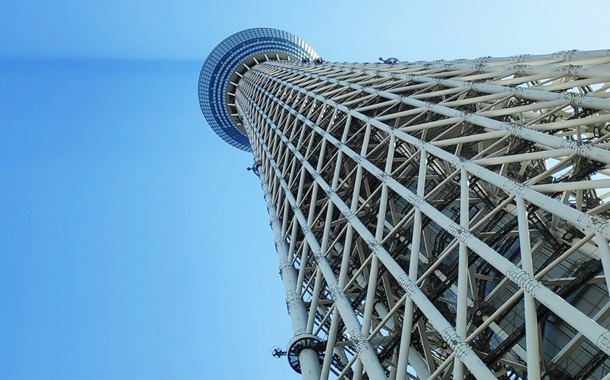Hybrid Time Series Methods and Machine Learning for Seismic Analysis and Volcano Eruption Predict
Downloads
Doi:10.28991/HIJ-2025-06-01-08
Full Text:PDF
Downloads
Supriyo, B., Hidayat, S. S., Suharjono, A., Anif, M., & Koesuma, S. (2015). Design of real-time gas monitoring system based-on wireless sensor networks for Merapi volcano. 2014 1st International Conference on Information Technology, Computer, and Electrical Engineering: Green Technology and Its Applications for a Better Future, ICITACEE 2014 - Proceedings, 30–34. doi:10.1109/ICITACEE.2014.7065709.
Ratdomopurbo, A., Beauducel, F., Subandriyo, J., Agung Nandaka, I. G. M., Newhall, C. G., Suharna, Sayudi, D. S., Suparwaka, H., & Sunarta. (2013). Overview of the 2006 eruption of Mt. Merapi. Journal of Volcanology and Geothermal Research, 261, 87–97. doi:10.1016/j.jvolgeores.2013.03.019.
Sholihat, S. S., Indratno, S. W., & Mukhaiyar, U. (2021). The role of parameters in Bayesian Online Changepoint Detection: detecting early warning of mount Merapi eruptions. Heliyon, 7(7), e07482. doi:10.1016/j.heliyon.2021.e07482.
Surono, Jousset, P., Pallister, J., Boichu, M., Buongiorno, M. F., Budisantoso, A., Costa, F., Andreastuti, S., Prata, F., Schneider, D., Clarisse, L., Humaida, H., Sumarti, S., Bignami, C., Griswold, J., Carn, S., Oppenheimer, C., & Lavigne, F. (2012). The 2010 explosive eruption of Java's Merapi volcano-A "100-year” event. Journal of Volcanology and Geothermal Research, 241–242, 121–135. doi:10.1016/j.jvolgeores.2012.06.018.
Chan, H. P., Konstantinou, K. I., & Blackett, M. (2021). Spatio-temporal surface temperature variations detected by satellite thermal infrared images at Merapi volcano, Indonesia. Journal of Volcanology and Geothermal Research, 420. doi:10.1016/j.jvolgeores.2021.107405.
Antriyandarti, E., Ferichani, M., & Ani, S. W. (2013). Sustainability of Post-Eruption Socio Economic Recovery for the Community on Mount Merapi Slope through Horticulture Agribusiness Region Development (Case Study in Boyolali District). Procedia Environmental Sciences, 17, 46–52. doi:10.1016/j.proenv.2013.02.010.
Sunardi, S., Dede, M., Wibowo, S. B., Prasetyo, Y., Astari, A. J., Lukman, L., Lavigne, F., Gomez, C., Nurani, I. W., Sakai, Y., & Kamarudin, M. K. A. (2024). Preliminary assessment of river ecosystem services in the volcanic area of Mount Merapi, Indonesia. Aquatic Ecology, 58(3), 819–832. doi:10.1007/s10452-024-10107-4.
Falcin, A., Métaxian, J. P., Mars, J., Stutzmann, í‰., Komorowski, J. C., Moretti, R., Malfante, M., Beauducel, F., Saurel, J. M., Dessert, C., Burtin, A., Ucciani, G., de Chabalier, J. B., & Lemarchand, A. (2021). A machine-learning approach for automatic classification of volcanic seismicity at La Soufrière Volcano, Guadeloupe. Journal of Volcanology and Geothermal Research, 411. doi:10.1016/j.jvolgeores.2020.107151.
Espinosa-Ortega, T., Budi-Santoso, A., Sulistiyani, Win, N. T. Z., Widiwijayanti, C., & Costa, F. (2022). Probabilistic analysis to correlate seismic data with lava extrusion phases at Merapi volcano (Indonesia). Journal of Volcanology and Geothermal Research, 426. doi:10.1016/j.jvolgeores.2022.107537.
Audretsch, J. (2020). Earthquake Detection using Deep Learning Based Approaches. KAUST Research Repository, KAUST: King Abdullah University of Science and Technology, Saudi Arabia. doi:10.25781/KAUST-52098.
Wiszniowski, J., Plesiewicz, B., & Lizurek, G. (2021). Machine learning applied to anthropogenic seismic events detection in Lai Chau reservoir area, Vietnam. Computers and Geosciences, 146. doi:10.1016/j.cageo.2020.104628.
Titos, M., Bueno, A., Garcia, L., & Benitez, C. (2018). A Deep Neural Networks Approach to Automatic Recognition Systems for Volcano-Seismic Events. IEEE Journal of Selected Topics in Applied Earth Observations and Remote Sensing, 11(5), 1533–1544. doi:10.1109/JSTARS.2018.2803198.
Kubo, H., Naoi, M., & Kano, M. (2024). Recent advances in earthquake seismology using machine learning. Earth, Planets and Space, 76(1), 36. doi:10.1186/s40623-024-01982-0.
Lara, F., Lara-Cueva, R., Larco, J. C., Carrera, E. V., & León, R. (2021). A deep learning approach for automatic recognition of seismo-volcanic events at the Cotopaxi volcano. Journal of Volcanology and Geothermal Research, 409, 107142. doi:10.1016/j.jvolgeores.2020.107142.
Malfante, M., Dalla Mura, M., Mars, J. I., Métaxian, J. P., Macedo, O., & Inza, A. (2018). Automatic Classification of Volcano Seismic Signatures. Journal of Geophysical Research: Solid Earth, 123(12), 10,645-10,658. doi:10.1029/2018JB015470.
Titos, M., Bueno, A., García, L., Benítez, M. C., & Ibañez, J. (2019). Detection and Classification of Continuous Volcano-Seismic Signals with Recurrent Neural Networks. IEEE Transactions on Geoscience and Remote Sensing, 57(4), 1936–1948. doi:10.1109/TGRS.2018.2870202.
Vaezi, Y., & van der Baan, M. (2015). Comparison of the STA/LTA and power spectral density methods for microseismic event detection. Geophysical Journal International, 203(3), 1896–1908. doi:10.1093/gji/ggv419.
Qu, S., Guan, Z., Verschuur, E., & Chen, Y. (2020). Automatic high-resolution microseismic event detection via supervised machine learning. Geophysical Journal International, 222(3), 1881–1895. doi:10.1093/gji/ggaa193.
Pantobe, L., Burtin, A., Chanard, K., & Komorowski, J. C. (2024). Evolution of shallow volcanic seismicity in the hydrothermal system of La Soufrière de Guadeloupe following the April 2018 MLV 4.1 earthquake. Journal of Volcanology and Geothermal Research, 447. doi:10.1016/j.jvolgeores.2023.107989.
Ma, H., Chu, R., Sheng, M., & Yu, Z. (2020). Template matching for simple waveforms with low signal-to-noise ratio and its application to icequake detection. Earthquake Science, 33(5–6), 256–263. doi:10.29382/eqs-2020-0256-01.
Yang, D. H., Zhou, X., Wang, X. Y., & Huang, J. P. (2021). Mirco-earthquake source depth detection using machine learning techniques. Information Sciences, 544, 325–342. doi:10.1016/j.ins.2020.07.045.
Ikeda, H., & Takagi, R. (2019). Coseismic changes in subsurface structure associated with the 2018 Hokkaido Eastern Iburi Earthquake detected using autocorrelation analysis of ambient seismic noise. Earth, Planets and Space, 71(1), 1-11. doi:10.1186/s40623-019-1051-5.
Nurtas, M., Zhantaev, Z., & Altaibek, A. (2024). Earthquake time-series forecast in Kazakhstan territory: Forecasting accuracy with SARIMAX. Procedia Computer Science, 231, 353–358. doi:10.1016/j.procs.2023.12.216.
Kong, Q., Trugman, D. T., Ross, Z. E., Bianco, M. J., Meade, B. J., & Gerstoft, P. (2019). Machine learning in seismology: Turning data into insights. Seismological Research Letters, 90(1), 3–14. doi:10.1785/0220180259.
Liu, H., Song, J., & Li, S. (2022). Seismic Event Identification Based on a Generative Adversarial Network and Support Vector Machine. Frontiers in Earth Science, 10. doi:10.3389/feart.2022.814655.
Ross, Z. E., Trugman, D. T., Hauksson, E., & Shearer, P. M. (2019). Searching for hidden earthquakes in Southern California. Science, 364(6442), 767-771.. doi:10.1126/science.aaw6888.
Jiao, P., & Alavi, A. H. (2020). Artificial intelligence in seismology: Advent, performance and future trends. Geoscience Frontiers, 11(3), 739–744. doi:10.1016/j.gsf.2019.10.004.
Centeno, R., Gómez-Salcedo, V., Lazarte, I., Vilca-Nina, J., Osores, S., & Mayhua-Lopez, E. (2024). Near-real-time multiparametric seismic and visual monitoring of explosive activity at Sabancaya volcano, Peru. Journal of Volcanology and Geothermal Research, 451, 108097. doi:10.1016/j.jvolgeores.2024.108097.
Ozkaya, S. G., Baygin, M., Barua, P. D., Tuncer, T., Dogan, S., Chakraborty, S., & Acharya, U. R. (2024). An automated earthquake classification model based on a new butterfly pattern using seismic signals. Expert Systems with Applications, 238. doi:10.1016/j.eswa.2023.122079.
Lara, F., León, R., Lara-Cueva, R., Tinoco-S., A. F., & Ruiz, M. (2022). Detection of volcanic micro earthquakes based on homomorphic deconvolution and STA/LTA. Journal of Volcanology and Geothermal Research, 421. doi:10.1016/j.jvolgeores.2021.107439.
Song, Y., Lee, J., Yeeh, Z., Kim, M., & Byun, J. (2023). Improved lithospheric seismic velocity and density model of the Korean Peninsula from ambient seismic noise data using machine learning. Journal of Asian Earth Sciences, 254. doi:10.1016/j.jseaes.2023.105728.
Coombs, M. L., Wech, A. G., Haney, M. M., Lyons, J. J., Schneider, D. J., Schwaiger, H. F., Wallace, K. L., Fee, D., Freymueller, J. T., Schaefer, J. R., & Tepp, G. (2018). Short-Term Forecasting and Detection of Explosions During the 2016–2017 Eruption of Bogoslof Volcano, Alaska. Frontiers in Earth Science, 6. doi:10.3389/feart.2018.00122.
Dempsey, D. E., Cronin, S. J., Mei, S., & Kempa-Liehr, A. W. (2020). Automatic precursor recognition and real-time forecasting of sudden explosive volcanic eruptions at Whakaari, New Zealand. Nature Communications, 11(1), 3562. doi:10.1038/s41467-020-17375-2.
Manley, G. F., Pyle, D. M., Mather, T. A., Rodgers, M., Clifton, D. A., Stokell, B. G., Thompson, G., Londoño, J. M., & Roman, D. C. (2020). Understanding the timing of eruption end using a machine learning approach to classification of seismic time series. Journal of Volcanology and Geothermal Research, 401. doi:10.1016/j.jvolgeores.2020.106917.
Saad, O. M., & Chen, Y. (2021). Earthquake Detection and P-Wave Arrival Time Picking Using Capsule Neural Network. IEEE Transactions on Geoscience and Remote Sensing, 59(7), 6234–6243. doi:10.1109/TGRS.2020.3019520.
Mandita, F., Ashari, A., Wibowo, M., & Suryanto, W. (2024). A Prototype for The Detection and Classification of Seismic Events Using STA/LTA And Machine Learning. Journal of Theoretical and Applied Information Technology, 102(10), 4559-4570.
Mustafa, A. H., Abdelmoneim, F. M., Matta, M. G., Barghash, T. O., & Gomaa, W. (2022). Automatic Forecasting of Volcanoes Eruption Time. Proceedings of the 2022 16th International Conference on Ubiquitous Information Management and Communication, IMCOM 2022, 1-8. doi:10.1109/IMCOM53663.2022.9721804.
Abebe, E., Kebede, H., Kevin, M., & Demissie, Z. (2023). Earthquakes magnitude prediction using deep learning for the Horn of Africa. Soil Dynamics and Earthquake Engineering, 170. doi:10.1016/j.soildyn.2023.107913.
Sandhya, G., Babu, J. B., Babu, G. P., & Yallamandaiah, S. (2023). CNN Based Automatic Fault Detection in 3D Seismic Images. 2023 7th International Conference On Computing, Communication, Control And Automation, ICCUBEA 2023, 1-6. doi:10.1109/ICCUBEA58933.2023.10392122.
Lestari, I. (2021). 4 Levels of Volcano Status. Available online: https://ilmugeografi.com/ilmu-bumi/gunung/tingkatan-status-gunung-berapi (accessed on February 2025).
- This work (including HTML and PDF Files) is licensed under a Creative Commons Attribution 4.0 International License.






















